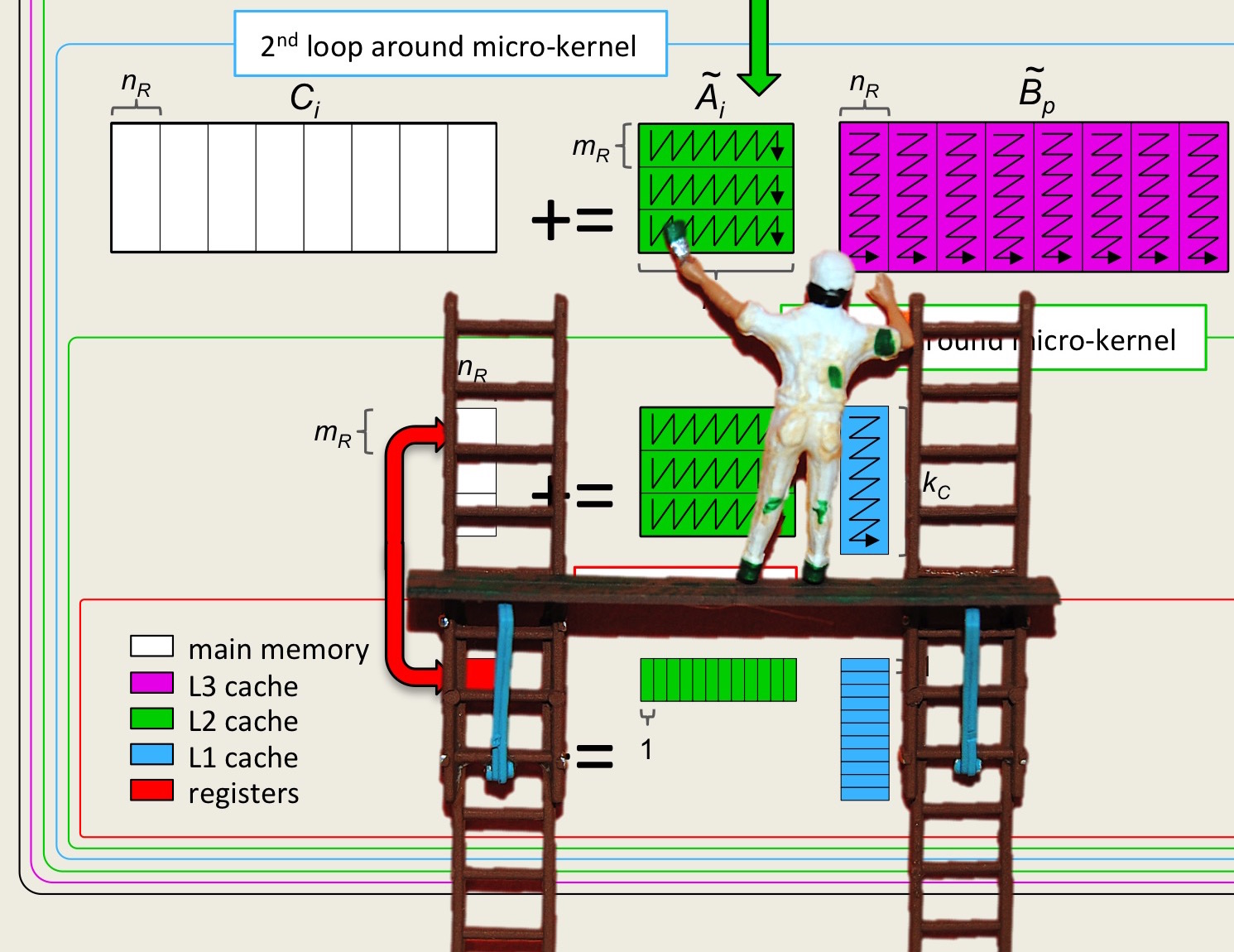Unit 1.3.4 The axpy operation
¶Homework 1.3.4.1.
Compute
\begin{equation*}
(-2) \left( \begin{array}{r}
2 \\
-1 \\
3
\end{array} \right)
+
\left( \begin{array}{r}
2 \\
1 \\
0
\end{array} \right)
\end{equation*}
Solution
\begin{equation*}
\begin{array}{rcl}
(-2) \left( \begin{array}{r}
2 \\
-1 \\
3
\end{array} \right)
+
\left( \begin{array}{r}
2 \\
1 \\
0
\end{array} \right)
=
\left( \begin{array}{r}
(-2) \times (2) \\
(-2) \times (-1) \\
(-2) \times (3)
\end{array} \right)
+
\left( \begin{array}{r}
2 \\
1 \\
0
\end{array} \right)\\
\amp = \amp
\left( \begin{array}{r}
(-2) \times (2) + 2 \\
(-2) \times (-1) +1 \\
(-2) \times (3) +0
\end{array} \right)
=
\left( \begin{array}{r}
-2 \\
3 \\
-6
\end{array} \right)
\end{array}
\end{equation*}
Given a scalar, \(\alpha \text{,}\) and two vectors, \(x \) and \(y \text{,}\) of size \(n \) with elements
\begin{equation*}
x =
\left( \begin{array}{c c c c}
\chi_0 \\
\chi_1 \\
\vdots \\
\chi_{n-1}
\end{array}
\right)
\quad
\mbox{and}
\quad
y =
\left( \begin{array}{c c c c}
\psi_0 \\
\psi_1 \\
\vdots \\
\psi_{n-1}
\end{array}
\right),
\end{equation*}
the scaled vector addition (axpy) operation is given by
\begin{equation*}
y := \alpha x + y
\end{equation*}
which in terms of the elements of the vectors equals
\begin{equation*}
\begin{array}{rcl}
\left( \begin{array}{c c c c}
\psi_0 \\
\psi_1 \\
\vdots \\
\psi_{n-1}
\end{array}
\right)
\amp:=\amp
\alpha
\left( \begin{array}{c c c c}
\chi_0 \\
\chi_1 \\
\vdots \\
\chi_{n-1}
\end{array}
\right)
+
\left( \begin{array}{c c c c}
\psi_0 \\
\psi_1 \\
\vdots \\
\psi_{n-1}
\end{array}
\right) \\
\amp=\amp
\left( \begin{array}{c c c c}
\alpha
\chi_0 \\
\alpha
\chi_1 \\
\vdots \\
\alpha
\chi_{n-1}
\end{array}
\right)
+
\left( \begin{array}{c c c c}
\psi_0 \\
\psi_1 \\
\vdots \\
\psi_{n-1}
\end{array}
\right)
=
\left( \begin{array}{c c c c}
\alpha \chi_0 + \psi_0 \\
\alpha \chi_1 + \psi_1 \\
\vdots \\
\alpha \chi_{n-1} + \psi_{n-1}
\end{array}
\right).
\end{array}
\end{equation*}
The name axpy comes from the fact that in Fortran 77 only six characters and numbers could be used to designate the names of variables and functions. The operation \(\alpha x + y \) can be read out loud as "scalar alpha times x plus y" which yields the acronym axpy.
Homework 1.3.4.2.
An outline for a routine that implements the axpy operation is given by
#define chi( i ) x[ (i)*incx ] // map chi( i ) to array x
#define psi( i ) y[ (i)*incy ] // map psi( i ) to array y
void Axpy( int n, double alpha, double *x, int incx, double *y, int incy )
{
for ( int i=0; i<n; i++ )
psi(i) +=
}
in file Assignments/Week1/C/Axpy.c.
Complete the routine and test the implementation by using it in the next unit.
